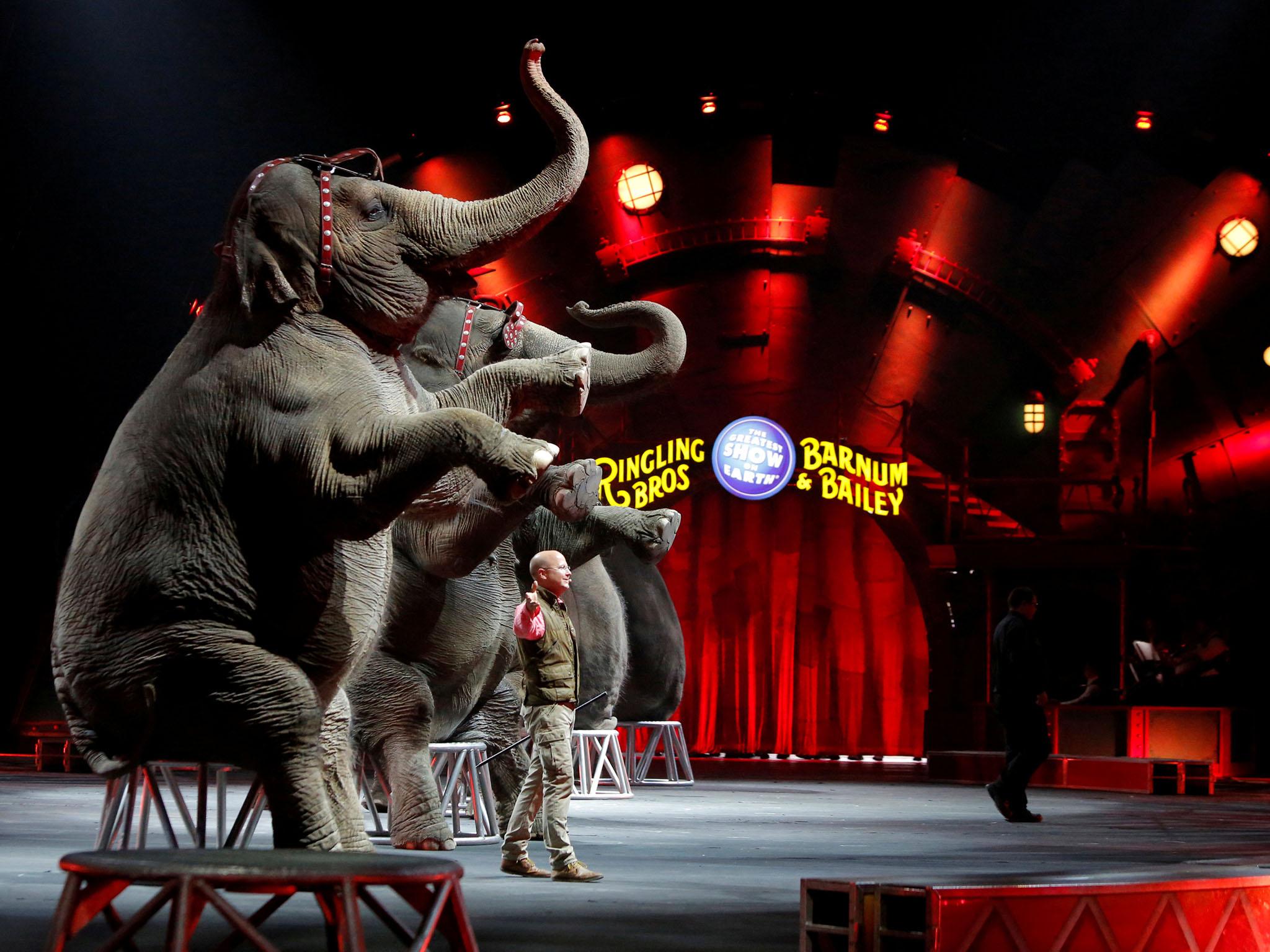Why America's most famous circus was destined to fail
While hugely popular for a time, the advent of the three-ring circus invited animal cruelty complaints and led to the demise of more skilled circus artistry

The announcement that America’s best known and longest running circus, Ringling Bros and Barnum & Bailey, will close in May has been greeted with glee by animal rights activists, who have been trying to shut down the circus, infamous for its exotic animals, for decades. Other more mournful reports have lamented that the demise of the “Greatest Show on Earth” after 146 years could spell the end of circus.
But circus will, of course, continue. The circus arts go back thousands of years and the demonstration of physical feats is so deeply rooted in the human experience that new forms of circus will continue to be created as old forms die. A look at the history of circus and Ringling’s place within it, however, reveals that its demise was perhaps inevitable from the get-go.
The modern circus was founded by the former Hussar Philip Astley on London’s South Bank in 1768. Prior to Astley, acrobats, jugglers and clowns could be seen at fayres or on the streets; but Astley brought them together for the first time. Circus spread so rapidly that it became the modern world’s first mass entertainment. In the 1830s, American circuses began to appear in canvas tents, rather than dedicated wooden structures, taking entertainment from town to town and developing a huge audience. The tented circus with its single 42-foot ring became the standard form.
By the late 19th century, travelling performers had gained legitimacy. Having been persecuted as rogues and vagabonds for centuries, some became stars, and fortunes were earned. Marketing owes much to the early circus and military logisticians routinely consulted with circuses on the movement of equipment, people and animals: some 1,000 people toured with Barnum and Bailey’s at its height. Circus was a byword for organisation, not chaos.
Three rings
The three-ring circus, invented by Ringling founders P T Barnum and William Coup in 1871, was the apogee of this success. Instead of watching a single act, three acts would perform simultaneously in three rings. The biggest stars held the centre ring, overseen by occupants of the most expensive seats, with lesser acts and cheaper seats on either side. “The Greatest Show on Earth”, Barnum and Bailey’s circus vision was soon emulated by others in the newly industrialising cities of the US.
But from the perspective of the circus arts, three rings were a mixed blessing. To fill them, the shows had to be spectacular and this required louder and bigger parades, greater risk, larger numbers of people and animals and constant novelty. Wild animals had only moved from the menageries into circus in the mid-19th century and the three rings soon became the home of large troupes of elephants and mixed groups of wild cats.
This brought the opprobrium that eventually undermined the legitimacy of the circus for many. As early as the 1920s, legislation was passed in the UK to regulate the use of animals. And as the animal rights movement grew from the 1970s, so did the criticism of circus and a series of bans from local authorities.
Ringlings withdrew their elephants last year and traditionalists have already blamed the decline in the size of recent audiences on that decision. Indeed, there may be a lesson here for businesses to distinguish between the demands of their customers and those of their critics. The evidence suggests that a substantial proportion of the circus going public are attracted by animal acts.
Animals or artistry?
But this was not the only irony in the history of the three-ring circus. Its focus on spectacle undermined those arts that were quieter and required the development of relationships between artists and audience. The highly skilled acrobatic and musical clowns of the 19th century were replaced by water squirting, paste throwing troupes. Jugglers added ever more objects to their repertoires rather than developing their artistry. Performers in the outside rings had to accommodate their acts to the music and rhythm of the centre. By the 1970s, young American and Canadian performers, inspired by the classical one-ring circus of Europe, rejected all this.
They reinvigorated the single-ring circus back home, their New Circus movement later spawning Cirque du Soleil and its many emulators. At the same time, the role that circus arts could play in developing children’s confidence and physical literacy inspired hundreds of circus schools to be founded. From the London Olympic opening ceremony to music videos, from the popular nostalgia of Gifford Circus to the continuing success of Zippos, from social circuses working with children in Afghanistan to those working with migrant communities across Europe, the circus arts continue in many different forms and venues. The 250th anniversary of the modern circus will be celebrated with gusto in 2018.
Like many business forms, the three-ring circus existed in tension with the professional practices it housed. In some cases, a new type of business can provide resources, legitimacy and status to those who work in it. In others, the need for grandeur and growth might do damage as well as good and eventually undermine the business itself, even if this takes 146 years.
This article was originally published on The Conversation (conversation.com) Ron Beadle is a Professor of Organisation and Business Ethics at Northumbria University, Newcastle
Subscribe to Independent Premium to bookmark this article
Want to bookmark your favourite articles and stories to read or reference later? Start your Independent Premium subscription today.

Join our commenting forum
Join thought-provoking conversations, follow other Independent readers and see their replies